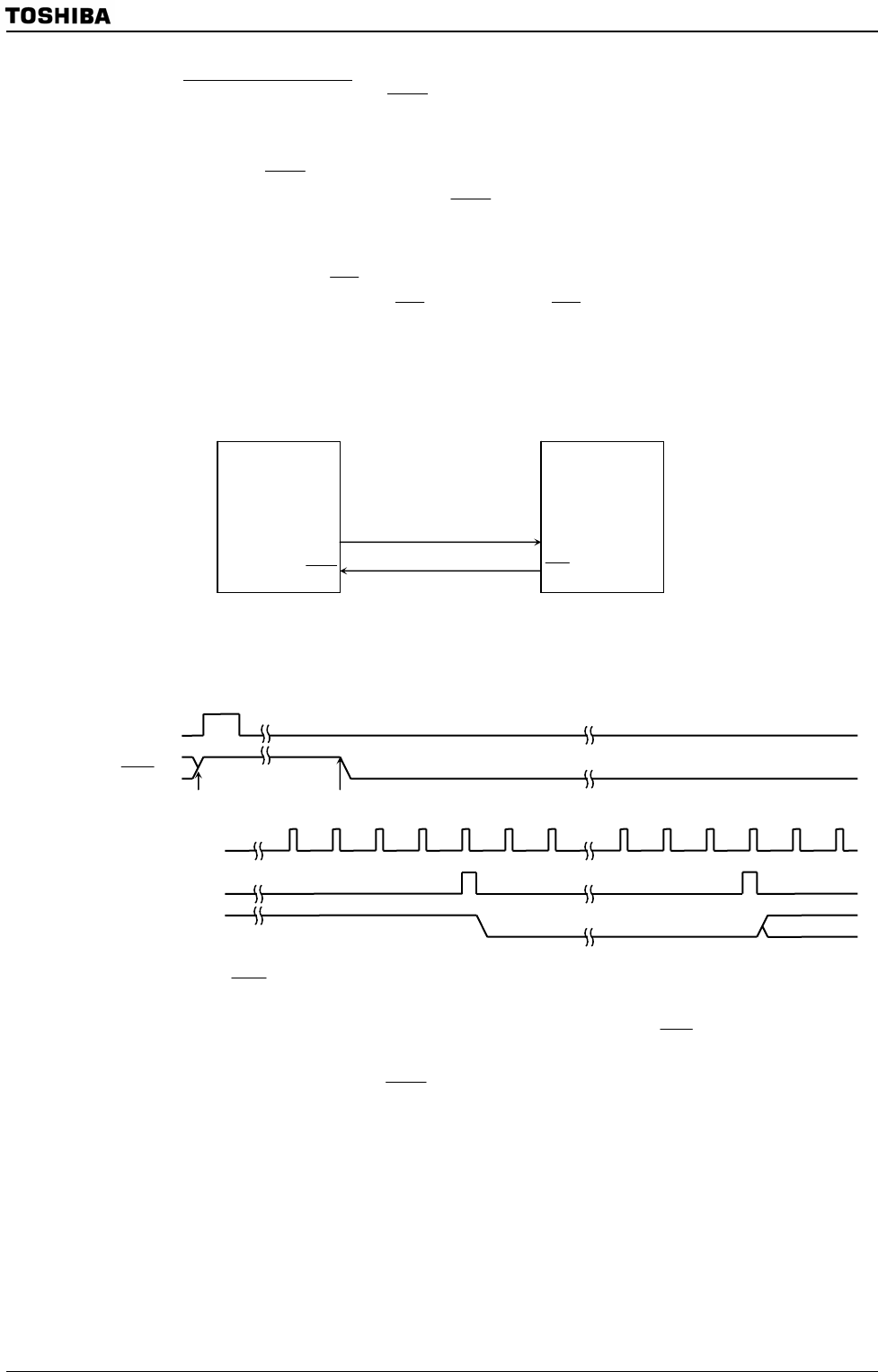
TMP92CZ26A
92CZ26A-324
Handshake function
Serial Channels 0 has a
0CTS
pin. Use of this pin allows data can be sent in units of
one frame; thus, Overrun errors can be avoided. The handshake functions is enabled
or disabled by the SC0MOD <CTSE> setting.
When the
0CTS
pin goes High on completion of the current data send, data
transmission is halted until the
0CTS
pin goes Low again. However, the INTTX0
Interrupt is generated, it requests the next data send to the CPU. The next data is
written in the Transmission Buffer and data sending is halted.
Though there is no
RTS pin, a handshake function can be easily configured by setting
any port assigned to be the
RTS function. The RTS should be output "High" to request
send data halt after data receive is completed by software in the RXD interrupt
routine.
Figure 3.14.4 Handshake function
Note 1: (1) If the
0CTS
signal goes High during transmission, no more data will be sent after completion of the
current transmission.
Note 2: (2) Transmission starts on the first falling edge of the TXDCLK clock after the
0CTS
signal has fallen.
Figure 3.14.5
0CTS
(Clear to send) Timing
TXD
CTS0
RXD
RTS (Any port)
TMP92CZ26A TMP92CZ26A
Sender Receiver
313 14 15 16 1 2
SIOCLK
314 15 16 1 2
Start bit
bit0
(1) (2)
Send is suspended
from (1) and (2)
Timing to writing to the
transmission buffe
r
TXDCLK
TXD
CTS0


















